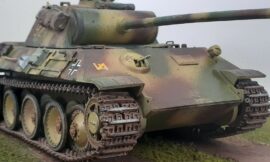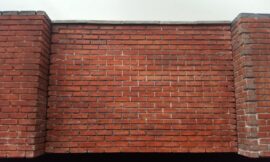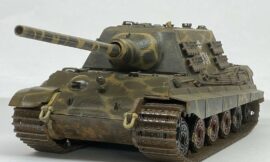The Hetzer, officially known as the Jagdpanzer 38(t), was a highly successful German tank destroyer deployed during World War II. It was developed based on the chassis of the Czechoslovakian Panzer 38(t) tank, which Germany had acquired after the occupation of Czechoslovakia in 1939. The Hetzer is renowned for its compact size, excellent firepower, and mobility, making it a formidable opponent for Allied tanks and vehicles.
Development and Design
The development of the Hetzer began in 1943, as German forces faced increasing Allied armored threats on the Eastern and Western Fronts. The goal was to create a lightweight, highly mobile tank destroyer that could be produced quickly and in large numbers. The chassis of the Panzer 38(t) was chosen due to its reliability and availability.
The Hetzer’s design featured a low-profile superstructure with sloped armor, which provided enhanced protection against incoming fire. The armor thickness varied, with frontal armor ranging from 60 to 80 mm, while the sides and rear were thinner to save weight. Its compact size and low silhouette made it difficult for enemy tanks to spot and target, giving the Hetzer a significant advantage in concealment and ambush tactics.
Armament and Capabilities
The primary armament of the Hetzer was the 7.5 cm Pak 39 L/48 gun, which was highly effective against Allied tanks and armored vehicles of the time. This gun had good penetration capabilities and was capable of firing both armor-piercing and high-explosive rounds. The Pak 39 L/48 was mounted in a fixed casemate, meaning the entire vehicle had to be turned to aim the gun. While this restricted its field of fire compared to a turret-mounted gun, it contributed to the Hetzer’s low profile and reduced weight.
Additionally, the Hetzer was equipped with a 7.92 mm MG 34 or MG 42 machine gun for defense against infantry and soft targets.
Mobility and Performance
The Hetzer was powered by a Praga AE 6-cylinder engine, providing 160 horsepower. This gave it a top speed of around 42 km/h (26 mph) on roads and a range of approximately 177 kilometers (110 miles) on a full tank of fuel. Its torsion bar suspension and relatively light weight (around 16 metric tons) allowed it to traverse rough terrain and maneuver effectively in urban and wooded areas, where its small size provided a tactical advantage.
Operational History
The Hetzer entered production in early 1944 and quickly became one of the most produced tank destroyers of the war. It saw extensive service on both the Eastern and Western Fronts, where its agility, firepower, and low silhouette made it a favorite among its crews. The Hetzer was used in defensive roles, ambush tactics, and as part of mobile counter-attack units.
Despite its effectiveness, the Hetzer, like other German armored vehicles, faced challenges in the later stages of the war due to Allied air superiority, fuel shortages, and the overwhelming numerical superiority of Allied tanks. However, its compact design and adaptability allowed it to remain in service until the end of the war and beyond, with some units used by various post-war armies.
Legacy and Impact
The Hetzer’s success influenced post-war tank destroyer design, particularly in the concept of using compact, highly mobile platforms with powerful anti-tank guns. Its design principles were echoed in later vehicles such as the Swiss G-13 and the Czechoslovakian M53/59 Praga. The Hetzer’s combat record and reputation as a reliable and effective tank destroyer cemented its place in military history as one of the most iconic armored vehicles of World War II.
Conclusion
The Hetzer, or Jagdpanzer 38(t), stands out as a testament to German engineering ingenuity and adaptability during World War II. Its combination of firepower, mobility, and armor protection made it a formidable opponent on the battlefield. Despite its limitations and the challenges faced by the German war effort in the later stages of the war, the Hetzer remains a respected and admired vehicle among enthusiasts and historians alike for its significant contributions to armored warfare.
4o












